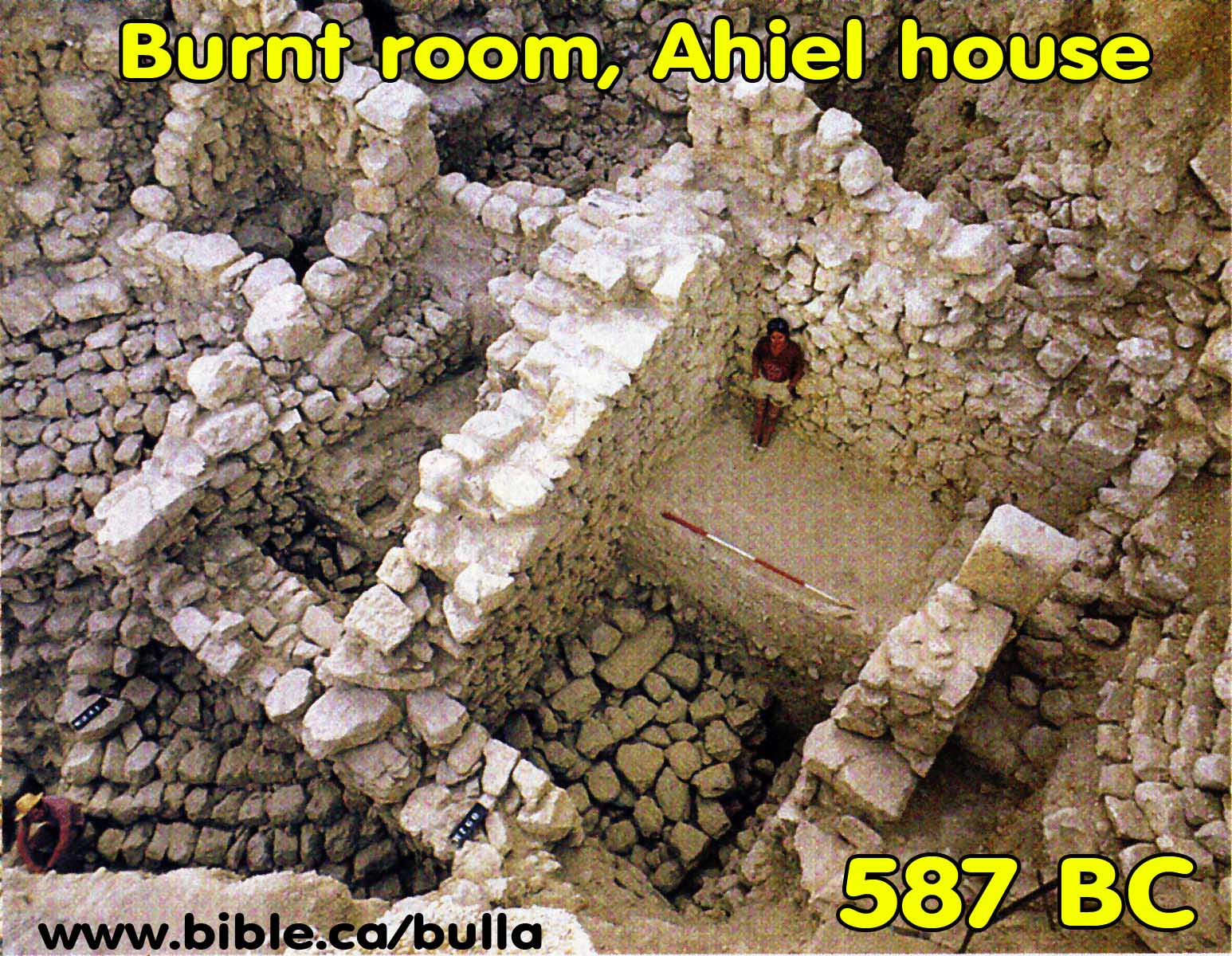Bulla and chamber room of Elishama the scribe, son of Semachiah
Bible Bullae from Israel and Judah
|
Bulla of Elishama son of Semachiah "Archaeologists are digging up bible stories!!!" |
|
|
||||||
|
Encyclopedia of Bullae and Seals: The Exhibit: On-line Museum of Bulla and seals Security: How bullae are made to seal papyrus Forgeries: Known fake bullae and seals |
||||||
|
|
||||||
|
Archaeologists are digging up bible stories!!! |
||||||
|
Archaeology is an important science that confirms the historical accuracy of the Bible. Since the Bible refers to hundreds of cities, kings, and places, we would expect to find evidence from on-site excavations. And this is exactly what we have found. The Bible is the most historically accurate book of history on earth. Read the Bible daily! |
|
|||||
|
|
||||||
Encyclopedia of Bullae and Seals of Judea and Israel
|
Bulla "belonging to Elishama son of Semachiah" |
Not only have we found the bulla of Elishama, but we have also found the very scribal chamber of Elishama from Jeremiah 36:12!
1. "he went down to the king’s house, into the scribe’s chamber. And behold, all the officials were sitting there—Elishama the scribe, and Delaiah the son of Shemaiah, and Elnathan the son of Achbor, and Gemariah the son of Shaphan, and Zedekiah the son of Hananiah, and all the other officials." (Jeremiah 36:12)
2. "So they went to the king in the court, but they had deposited the scroll in the chamber of Elishama the scribe, and they reported all the words to the king. Then the king sent Jehudi to get the scroll, and he took it out of the chamber of Elishama the scribe. And Jehudi read it to the king as well as to all the officials who stood beside the king." (Jeremiah 36:20–21)
3. "The Bullae House, east of the House of Ahi’el, is so named for a collection of almost 50 clay sealings (bullae) with Hebrew lettering found there. The floor of this house, only partly excavated, was covered by a thick charred destruction layer containing the bullae as well as pottery vessels, arrowheads and limestone cult stands, all of which attest to the character of the house as a public building. The finds are typical of the final stage of the Iron Age and the bullae found in this context clearly date to the Babylonian destruction of Jerusalem in 587-6 BCE. The bullae, made of fingernail-sized lumps of soft clay shaped as flat disks, were affixed to a string binding a papyrus document and then stamped with a seal. To open and read the document, the bulla sealing had to be broken in order to separate it from the string. The conflagration that destroyed the house and burnt the documents stored in it also fired the clay of the bullae, thus preserving them in very good condition - fully legible. They bear dozens of Hebrew personal names, two of them belonging to personages known from the Bible. One is Gemaryahu son of Shafan, a high official at the court of King Jehoiakim of Judah who reigned on the eve of the destruction of Jerusalem by the Babylonians" (Jewish Virtual Library)
Elishama son of the scribe, Jer 36:12,20-21; 41:1 605BC
Ishmael the son of Nethaniah, the son of Elishama son of Semachiah, of the royal family 605
By Steve Rudd: Contact the author for comments, input or corrections.






